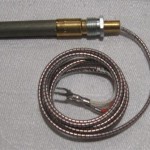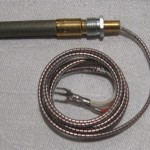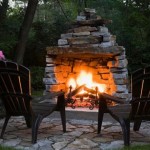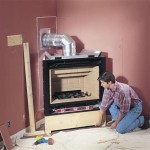Travertine Fireplace Hearth: A Comprehensive Guide
A fireplace serves as a central architectural feature in many homes, providing both warmth and aesthetic appeal. The hearth, the non-combustible area in front of and around the fireplace opening, plays a crucial safety and design role. Travertine, a form of limestone deposited by mineral springs, has emerged as a popular material choice for fireplace hearths. This article explores the characteristics, benefits, installation, and maintenance of travertine fireplace hearths, providing a detailed understanding of this natural stone option.
Travertine is characterized by its distinctive pitted surface and earthy tones, ranging from creamy whites and beiges to rustic browns and golds. These colors and textures are a result of the natural processes involved in its formation over thousands of years. Its porous nature means that it is more susceptible to staining and damage than some other stone options, but with proper sealing and maintenance, travertine can offer lasting beauty and functionality in a fireplace setting.
The choice of material for a fireplace hearth is significant, as it must withstand high temperatures and potential exposure to embers and ash. While other materials like brick, concrete, and granite are also commonly used, travertine offers a unique combination of natural beauty, durability, and relatively easy workability. The following sections will delve into the specifics of why travertine is a favored selection for fireplace hearths, encompassing its aesthetic qualities, performance characteristics, and practical considerations.
Aesthetic Appeal and Design Versatility
Travertine's natural variations in color, veining, and texture offer designers and homeowners a wide range of aesthetic possibilities. Unlike manufactured materials, each piece of travertine is unique, contributing to a one-of-a-kind look for the fireplace hearth. This inherent individuality allows for a customized design that complements various architectural styles, from traditional to contemporary.
The neutral color palette of travertine blends seamlessly with many different interior design schemes. Lighter shades of travertine can create a bright and airy feel, while darker tones can add warmth and sophistication. The stone can be cut and shaped to fit specific dimensions and design preferences, allowing for the creation of custom hearth designs that enhance the overall appearance of the fireplace and the surrounding room.
Furthermore, travertine can be finished in different ways to achieve various aesthetic effects. Honed travertine has a smooth, matte finish that is easy to maintain and provides a subtle, understated look. Polished travertine has a glossy, reflective surface that adds a touch of elegance. Tumbled travertine has a rustic, textured finish that is ideal for creating a more rustic and informal atmosphere. The choice of finish depends on the desired aesthetic and the overall design concept of the space.
The ability to incorporate travertine into different design features, such as fireplace surrounds or mantels, further enhances its design versatility. Coordinating the hearth material with other elements of the fireplace creates a cohesive and harmonious look. The natural beauty of travertine makes it a valuable asset for creating a visually appealing and inviting fireplace area.
Performance and Safety Considerations
Beyond its aesthetic qualities, travertine offers a number of performance benefits that make it suitable for use as a fireplace hearth. As a natural stone, travertine is inherently heat-resistant, meaning it can withstand the high temperatures generated by a fireplace without cracking or warping. This is a critical safety consideration, as the hearth must protect the surrounding floor and walls from heat damage and potential fires.
The non-combustible nature of travertine is another crucial safety factor. Unlike wood or other flammable materials, travertine will not ignite or contribute to the spread of fire. This feature provides an added layer of protection for the home and its occupants. Choosing a non-combustible material for the hearth is a fundamental safety requirement for any fireplace installation.
While travertine is heat-resistant and non-combustible, it is also a porous material. This means that it can absorb liquids and stains if not properly sealed. To protect the hearth from spills, ash, and other contaminants, it is essential to apply a high-quality sealant. The sealant creates a protective barrier that prevents liquids from penetrating the stone and causing discoloration or damage.
Regular cleaning and maintenance are also necessary to maintain the performance and appearance of a travertine hearth. Sweeping or vacuuming the hearth regularly will remove loose debris, while wiping it with a damp cloth and mild detergent will help to remove any stains or spills. Avoid using harsh chemicals or abrasive cleaners, as these can damage the sealant and the stone itself.
Proper installation is paramount for ensuring the safety and performance of a travertine hearth. It is crucial to adhere to local building codes and regulations regarding fireplace construction and hearth size. Professional installation is highly recommended, as it ensures that the hearth is properly supported, level, and adequately insulated from combustible materials.
Installation and Maintenance Procedures
The installation of a travertine fireplace hearth is a multi-step process that requires careful planning and execution. The first step is to prepare the subfloor by ensuring it is level, clean, and structurally sound. Any existing flooring or debris must be removed to create a smooth and stable surface for the hearth.
Next, a layer of mortar is applied to the subfloor. The mortar serves as a bonding agent between the subfloor and the travertine tiles or slabs. The travertine is then carefully placed onto the mortar bed, ensuring that it is level and properly aligned. Spacers are used to maintain consistent grout lines between the tiles.
Once the mortar has cured, the grout lines are filled with grout. The choice of grout color can have a significant impact on the overall appearance of the hearth. A grout color that matches the travertine will create a seamless look, while a contrasting grout color will highlight the individual tiles.
After the grout has been applied, it is important to clean the surface of the travertine thoroughly to remove any excess grout residue. A damp sponge and a grout haze remover can be used to clean the tiles without damaging the surface. Finally, the hearth is sealed with a high-quality sealant to protect it from stains and spills.
Maintaining a travertine fireplace hearth involves regular cleaning and periodic resealing. Sweeping or vacuuming the hearth regularly will remove loose debris, while wiping it with a damp cloth and mild detergent will help to remove any stains or spills. Avoid using harsh chemicals or abrasive cleaners, as these can damage the sealant and the stone itself.
The frequency of resealing depends on the level of use and exposure to spills and contaminants. Generally, it is recommended to reseal a travertine hearth every one to two years. Before resealing, the hearth should be thoroughly cleaned and allowed to dry completely. A high-quality sealant specifically designed for natural stone should be applied according to the manufacturer's instructions.
In the event of stubborn stains, specialized cleaning products designed for travertine may be necessary. However, it is important to test any cleaning product in an inconspicuous area first to ensure that it does not damage the stone. Professional stone restoration services can also be used to remove deep stains or repair any damage to the travertine hearth.
By following these installation and maintenance procedures, homeowners can ensure that their travertine fireplace hearth remains beautiful and functional for many years to come. Proper care and attention will help to preserve the natural beauty of the stone and protect it from damage, ensuring that it continues to be a focal point in the home.

Travertine Striped Detailed Fireplace Handcrafted 100 Denmark

Dark Oriental Travertine Fireplace Surround Carved Stone Creations

Travertine Fireplace Surround Ideas Alexander And Xavier Masonry

Travertine Fireplace Carmel Stone Imports Palo Alto Monterey Ca

Troia Light Travertine Modern Hand Carved Fireplace Surround Mantel

Marble Fireplaces Italian Ivory Travertine Fireplace Mantel Mfp 2308 Fine S Gallery Llc

5 Stacked Stone Surrounds Travertine Quartzite Or Marble

Maybe We Should Remodel The Fireplace With Travertine Tile

Natural Stone Options For Your Fireplace Surround

5 Travertine Fireplace Designs
Related Posts








